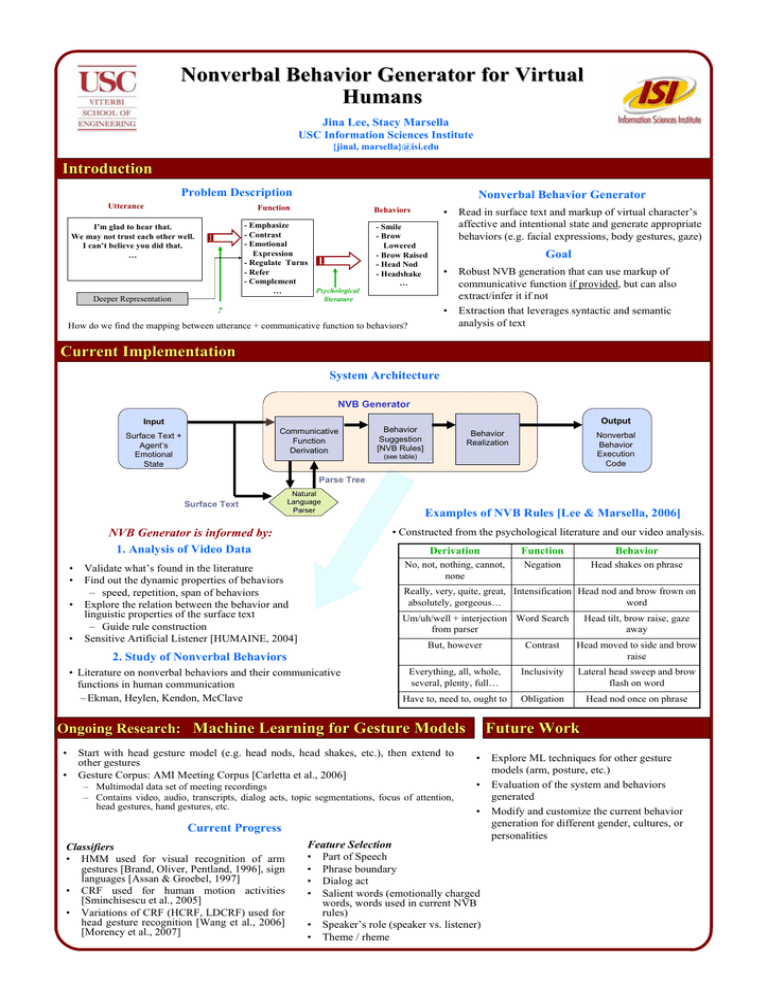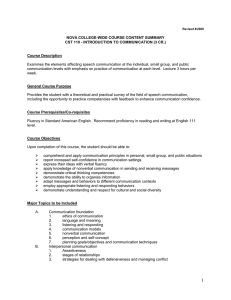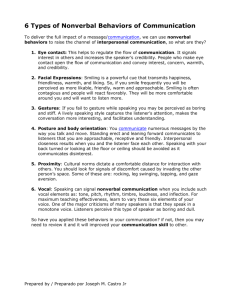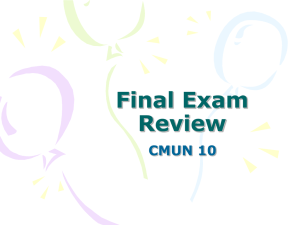Nonverbal Behavior Generator for Virtual Humans Introduction Jina Lee, Stacy Marsella
advertisement

Nonverbal Behavior Generator for Virtual
Humans
Jina Lee, Stacy Marsella
USC Information Sciences Institute
{jinal, marsella}@isi.edu
Introduction
Problem Description
Utterance
Nonverbal Behavior Generator
Function
Behaviors
- Emphasize
- Contrast
- Emotional
Expression
- Regulate Turns
- Refer
- Complement
Psychological
…
I’m glad to hear that.
We may not trust each other well.
I can’t believe you did that.
…
Deeper Representation
•
- Smile
- Brow
Lowered
- Brow Raised
- Head Nod
- Headshake
…
Read in surface text and markup of virtual character’s
affective and intentional state and generate appropriate
behaviors (e.g. facial expressions, body gestures, gaze)
Goal
•
literature
•
?
How do we find the mapping between utterance + communicative function to behaviors?
Robust NVB generation that can use markup of
communicative function if provided, but can also
extract/infer it if not
Extraction that leverages syntactic and semantic
analysis of text
Current Implementation
System Architecture
NVB Generator
Output
Input
Communicative
Function
Derivation
Surface Text +
Agent’s
Emotional
State
Behavior
Suggestion
[NVB Rules]
Behavior
Realization
Nonverbal
Behavior
Execution
Code
(see table)
Parse Tree
Surface Text
Natural
Language
Parser
• Constructed from the psychological literature and our video analysis.
NVB Generator is informed by:
1. Analysis of Video Data
•
•
•
•
Examples of NVB Rules [Lee & Marsella, 2006]
Validate what’s found in the literature
Find out the dynamic properties of behaviors
– speed, repetition, span of behaviors
Explore the relation between the behavior and
linguistic properties of the surface text
– Guide rule construction
Sensitive Artificial Listener [HUMAINE, 2004]
Derivation
Function
Behavior
No, not, nothing, cannot,
none
Negation
Head shakes on phrase
Really, very, quite, great, Intensification Head nod and brow frown on
absolutely, gorgeous…
word
Um/uh/well + interjection Word Search
from parser
But, however
Contrast
Head moved to side and brow
raise
Everything, all, whole,
several, plenty, full…
Inclusivity
Lateral head sweep and brow
flash on word
Have to, need to, ought to
Obligation
Head nod once on phrase
2. Study of Nonverbal Behaviors
• Literature on nonverbal behaviors and their communicative
functions in human communication
– Ekman, Heylen, Kendon, McClave
Ongoing Research: Machine Learning for Gesture Models
•
•
Start with head gesture model (e.g. head nods, head shakes, etc.), then extend to
other gestures
Gesture Corpus: AMI Meeting Corpus [Carletta et al., 2006]
– Multimodal data set of meeting recordings
– Contains video, audio, transcripts, dialog acts, topic segmentations, focus of attention,
head gestures, hand gestures, etc.
Future Work
•
•
•
Current Progress
Classifiers
• HMM used for visual recognition of arm
gestures [Brand, Oliver, Pentland, 1996], sign
languages [Assan & Groebel, 1997]
• CRF used for human motion activities
[Sminchisescu et al., 2005]
• Variations of CRF (HCRF, LDCRF) used for
head gesture recognition [Wang et al., 2006]
[Morency et al., 2007]
Head tilt, brow raise, gaze
away
Feature Selection
• Part of Speech
• Phrase boundary
• Dialog act
• Salient words (emotionally charged
words, words used in current NVB
rules)
• Speaker’s role (speaker vs. listener)
• Theme / rheme
Explore ML techniques for other gesture
models (arm, posture, etc.)
Evaluation of the system and behaviors
generated
Modify and customize the current behavior
generation for different gender, cultures, or
personalities


